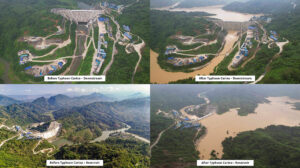
Investing in additional large dams may improve flood control — analysts
By Sheldeen Joy Talavera, Reporter
INVESTING in additional large dams may significantly improve flood control and water supply management, according to some analysts, who also emphasize the importance of addressing environmental impacts.
“Succeeding projects will, of course, depend on need and available funding, but they should be based on the most effective intervention for current conditions,” InfraWatch PH Convenor Terry L. Ridon said in a Viber message on Monday.
He cited insights from the National Irrigation Administration and the Department of Public Works and Highways, which mentioned the need for high dams to control the flow of water from upland to low-lying areas.
“We support this view, as long as the environmental and social impacts of future dam projects are addressed,” he said.
Mr. Ridon said that environmental and social impacts should be addressed in all projects located in environmentally critical areas.
“Government and private sector partners must ensure full compliance with existing environmental and social regulations,” he said.
In a statement on Sunday, Wawa JVCo, Inc. said that the Wawa Bulk Water Supply Project was cited by government officials for helping alleviate flooding caused by Super Typhoon Carina (international name: Gaemi).
Wawa JVCo, a joint venture company between Prime Infrastructure Capital, Inc. and San Lorenzo Ruiz Builders and Developers Group, is the developer and operator of the Wawa Bulk Water Supply Project.
“While designed as a water supply dam, the project can also help mitigate flooding in downstream communities, particularly low-lying areas in Rizal province and the eastern district of Metro Manila,” the company said.
In a situation briefing led by President Ferdinand R. Marcos, Jr. last week, Rizal Governor Niña Ynares said that the flooding in certain areas of the province “could have been significantly worse” without the Upper Wawa Dam.
“Mr. President, some time this month…, we saw it was empty and (they said) it would take six months for them to fill it up… If without it, I feel that, most likely, San Mateo and Montalban would be down; and definitely, Marikina and parts of Quezon City and even Pasig would be affected,” Ms. Ynares said.
The Upper Wawa Dam features a reservoir of about 450 hectares and can store up to 120 million cubic meters of water.
The Prime Infra-led WawaJVCo said that the dam’s reservoir accumulated over 90 million cubic meters of water during the super typhoon, which helped mitigate downstream flooding.
The second phase of the project will start supplying bulk water by the end of 2025.
The company said it will keep working with host communities “to help strengthen resilience against future weather-related challenges.”
Antonio A. Ligon, a law and business professor at De La Salle University in Manila, said: “As long as the profile of the Wawa Dam can be fitted to other areas, I see no objection to utilizing the Wawa model in other areas to prevent flooding.”
The Philippines can “effectively avoid floods if there is good environmental management,” he noted.
“We need to reconstruct and provide a long-term solution, not a temporary remedial measure.”



